Streaming Royalty Calculator
How NFT Streaming Royalties Work
Compare earnings from traditional streaming platforms versus NFT-based streaming rights. Based on industry averages and case studies from Audius, Royal, and 3LAU's NFT album.
Traditional Platforms: Spotify pays $0.003 per stream on average. After fees, creators often receive less than $0.001 per stream.
NFT Streaming: Creators can set custom rates (typically $0.005-$0.02 per stream) plus royalty percentages on secondary sales.
Imagine owning a piece of a song that keeps paying you every time someone streams it. Not just a share of the profits, but actual, verifiable, automatic payments-no middlemen, no 18-month delays. That’s the promise of streaming rights as NFTs. It’s not science fiction. It’s happening right now, quietly, in the corners of the internet where artists, fans, and tech builders are testing a new way to handle digital content.
What Exactly Are Streaming Rights as NFTs?
An NFT, or non-fungible token, is a unique digital certificate stored on a blockchain. Unlike Bitcoin or Ethereum, which are interchangeable, each NFT is one-of-a-kind. When applied to streaming rights, that NFT doesn’t store the video or audio file. Instead, it holds the legal permission to access and stream a specific piece of content-like a limited-edition album, a live concert recording, or an exclusive podcast episode.
Think of it like a VIP pass that’s also a receipt. The NFT proves you’re allowed to watch or listen. And because it’s on the blockchain, that permission can’t be faked, lost, or revoked by a corporation. Smart contracts-self-executing code on the blockchain-handle everything: who gets paid, when, and how much. If the NFT is resold, the original creator gets a cut automatically. No lawyers. No royalty societies. Just code doing what it was told.
How It Works: The Tech Behind the Promise
The system runs on three main parts: the blockchain, smart contracts, and decentralized storage.
- Blockchain: Most NFT streaming projects use Ethereum, especially after its switch to proof-of-stake in 2022. That cut energy use by 99.95%. Layer 2 solutions like Polygon or Arbitrum handle transactions faster and cheaper-often under $0.10 per transaction instead of $1-$5 on mainnet.
- Smart Contracts: These are the rules written in code. They define who owns the rights, how many times the content can be streamed, and what percentage goes to the creator on resale. Standards like ERC-2981 make royalty splits easier when multiple people are involved-like a musician, producer, and label.
- Decentralized Storage: The actual video or audio file is stored on IPFS (InterPlanetary File System), not on a company’s server. This prevents the content from disappearing if a platform shuts down. Services like Pinata help “pin” files permanently so the link doesn’t break.
When you buy an NFT with streaming rights, your wallet gets a link to the file on IPFS and a smart contract that says, “This user can play this track.” Every time it’s streamed, the contract checks your wallet’s ownership, logs the play, and sends the royalty payment in seconds.
Why This Matters for Creators
Traditional streaming platforms like Spotify pay artists an average of $0.003 per stream. After labels, distributors, and middlemen take their cuts, many musicians see less than a penny. Royalty payments take 6-18 months to arrive. And if you’re not signed to a label, you’re often left out of the system entirely.
With NFT streaming rights, artists bypass all that. Take 3LAU, a DJ who sold an NFT album in 2021 with built-in streaming rights. He made $11.7 million-not from selling the music, but from selling the right to access it. Fans who bought the NFTs got exclusive content. He got paid instantly. And every time someone resold the NFT, he got 10% automatically.
Another example: a small indie band in New Zealand sold 200 NFTs for their debut EP. Each NFT gave lifetime streaming access. They earned $18,000 upfront. Within six months, secondary sales generated another $3,200 in royalties-directly to their wallet. No bank. No delay. No paperwork.

The Downsides: Why It’s Not Everywhere Yet
For all its promise, streaming rights as NFTs aren’t ready to replace Spotify or Netflix. Here’s why:
- Technical Barriers: Most people don’t know how to use a crypto wallet. Buying an NFT means dealing with gas fees, seed phrases, and blockchain explorers. One Reddit user said they spent three weeks trying to fix a broken link after the storage provider changed addresses.
- Content Delivery Still Relies on Traditional Systems: NFTs only manage rights. The actual streaming still uses CDNs like Cloudflare or Akamai. If the server goes down, the video disappears-even if your NFT is still valid.
- Legal Gray Zones: Owning an NFT doesn’t mean you own the copyright. The U.S. Copyright Office made this clear in March 2023: “NFT ownership ≠ copyright ownership.” Unless the license is written into the smart contract, you might just own a fancy link.
- Scalability: Audius, one of the biggest NFT music platforms, has about 6.5 million monthly users. Spotify has over 600 million. The NFT streaming market is still less than 0.1% of the global music streaming industry.
And then there’s the cost. A single Ethereum transaction can still cost $1.27 on average. For a platform streaming thousands of tracks a minute, that adds up fast. That’s why most serious projects now use Layer 2 chains.
Who’s Trying It-and How
Major players aren’t ignoring this. Universal Music Group bought an NFT company in 2022. Warner Music partnered with Royal, a platform that lets fans buy shares of song royalties as NFTs. Twitch tested NFT profile pictures in 2022. Apple filed a patent in August 2023 for a “Blockchain-Based Media Distribution System.”
But the real action is with independent creators and niche platforms:
- Audius: A decentralized music platform where artists upload directly. Listeners earn tokens for streaming. Artists get paid in real time.
- Theta Network: Focuses on video. Users earn tokens for sharing bandwidth, making streaming cheaper and faster.
- Royal: Lets fans buy NFTs that represent a percentage of song royalties. No streaming access-just financial participation.
Spotify’s 2023 launch of “Artist Fundraising Links” is a hint of what’s coming: a hybrid model. Artists can now sell NFTs tied to exclusive content through Spotify’s platform-without forcing users into wallets.
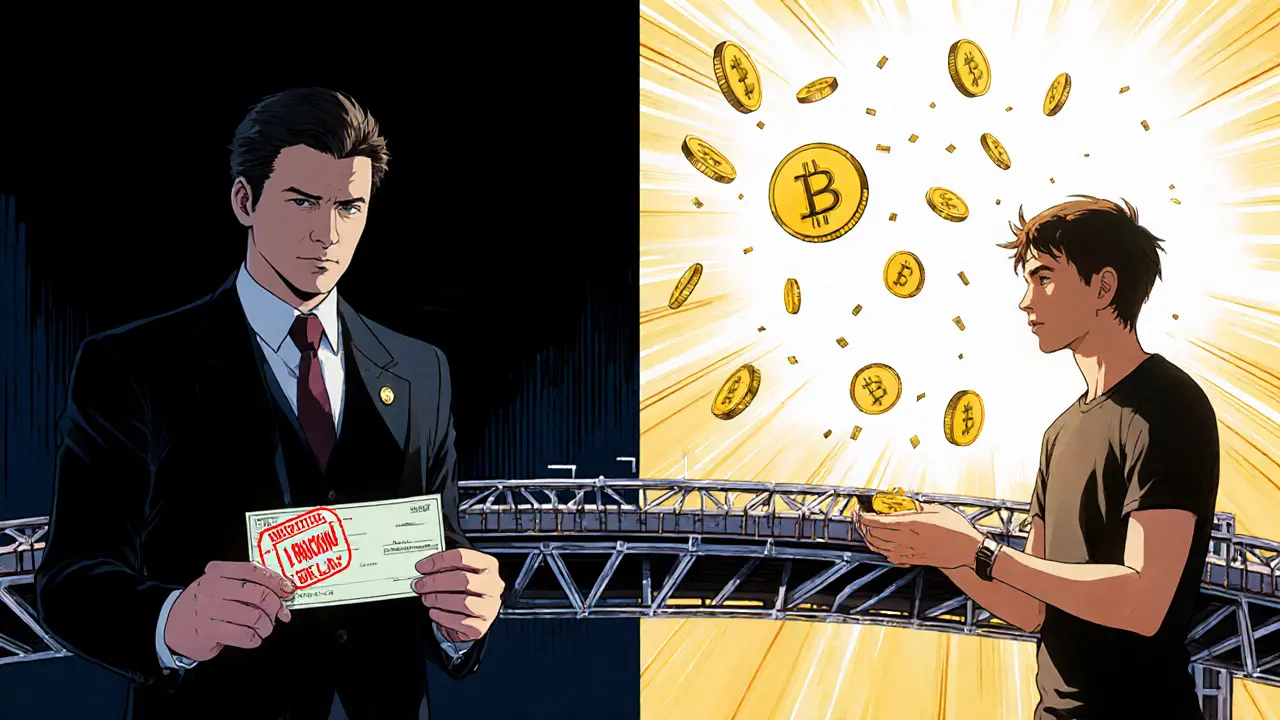
What’s Next? The Road Ahead
Deloitte predicts NFT-based rights management will grow to $8.2 billion in transaction volume by 2026. That’s a 40% annual growth rate. But growth doesn’t mean mass adoption.
The future likely looks like this:
- Niche, not mainstream: NFT streaming won’t replace YouTube or Netflix. But it will dominate limited-edition releases: live shows, fan-only content, collector’s editions.
- Hybrid systems: Platforms like Spotify or Apple Music will quietly integrate NFT features for artists who want them-without making regular users touch crypto.
- Improved UX: Wallet-as-a-service tools (like Fortmatic or Web3Auth) will let users log in with email or Google. No seed phrases needed.
- Legal clarity: As more contracts are written and tested, courts and copyright offices will start setting clearer rules on what NFTs actually grant.
For creators, the message is simple: if you have a loyal fanbase, you can now sell access-not just music. You can turn your most dedicated listeners into stakeholders. And you don’t need a label to do it.
Should You Try It?
If you’re a creator with a unique offering-live performances, rare recordings, exclusive interviews-then yes. Start small. Sell five NFTs with lifetime access to a bonus track. See how your fans respond.
If you’re a fan who wants to support artists directly and get something real in return, look for platforms that use Layer 2 blockchains (lower fees) and permanent storage (IPFS with Pinata). Avoid anything that asks you to pay $50 just to stream a song.
And if you’re just curious? Try one. Buy a $5 NFT from a small artist on Audius. Stream the track. Feel the difference between a corporate algorithm and a direct connection to someone’s work.
This isn’t about replacing the old system. It’s about adding a new layer-one where ownership, control, and fairness are built into the code.
Do NFTs give you copyright to the music or video?
No. Owning an NFT only gives you the right to access or stream the content, as defined by the smart contract. Copyright remains with the original creator unless they explicitly transfer it in writing. The U.S. Copyright Office confirmed this in March 2023.
Can I resell a streaming rights NFT?
Yes, unless the creator restricted resale in the smart contract. Most allow it, and the original artist usually gets a royalty-often 5-15%-every time it’s resold. This is automatic and happens within seconds.
What happens if the IPFS storage link breaks?
If the file isn’t permanently pinned, the link can die. Always check if the platform uses services like Pinata or Arweave to guarantee permanent storage. Reputable platforms will mention this upfront. If they don’t, avoid it.
Are NFT streaming rights environmentally friendly?
Yes, if built on proof-of-stake blockchains like Ethereum after its 2022 upgrade. Energy use dropped by 99.95%. Avoid projects still using proof-of-work chains like old Bitcoin or early Ethereum. Most modern NFT streaming platforms now use Polygon, Arbitrum, or Solana-all far more efficient.
How do I get started as a creator?
Start with Audius or Royal. Upload your content, set your royalty percentage, and mint your NFTs. Most platforms have simple interfaces. You don’t need to code. Just decide: what are you offering? Lifetime access? Exclusive content? A share of future royalties? Then let the platform handle the rest.
Is this just a bubble?
The hype around NFTs in 2021 was a bubble. But streaming rights as NFTs are solving real problems: delayed royalties, lack of creator control, and opaque payment systems. The technology is still immature, but the need isn’t. This isn’t about speculation-it’s about rebuilding how digital content is owned and paid for.


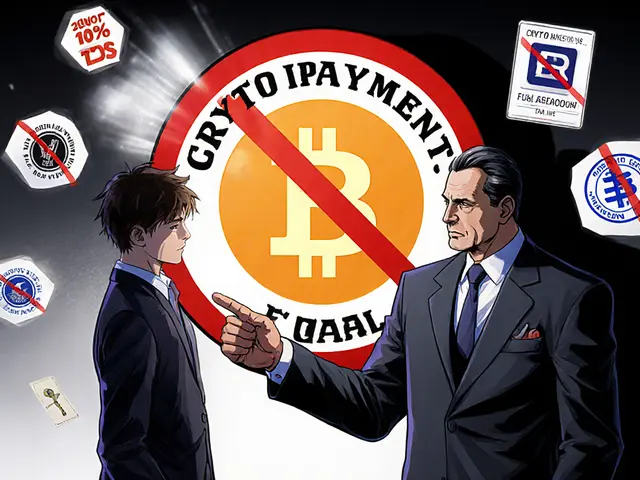
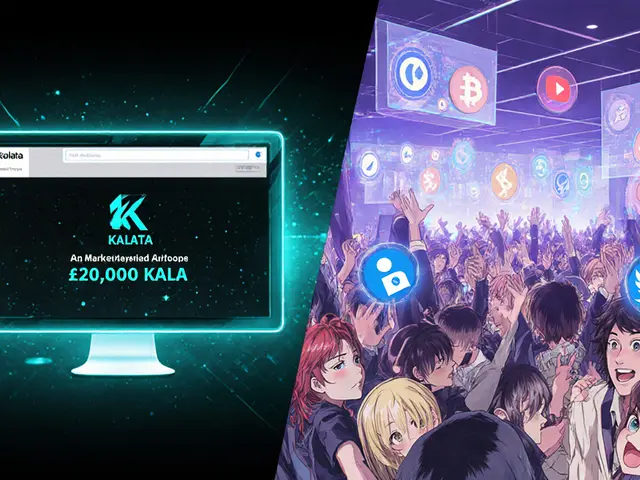
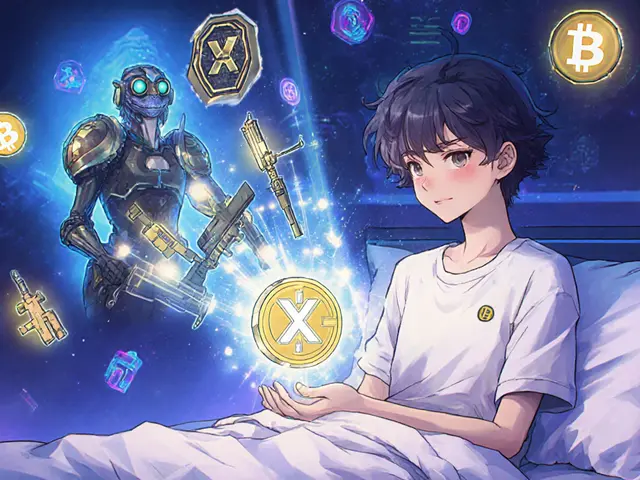

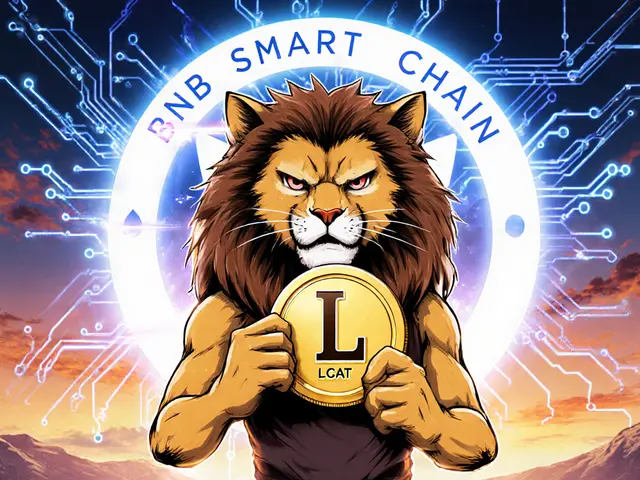
andrew seeby
November 4, 2025 AT 23:28Just bought my first NFT stream token for $3 on Audius 😊 totally wild to hear a track and know the artist got paid instantly. No middlemen, no waiting. This is what music should feel like.
Pranjali Dattatraya Upadhye
November 5, 2025 AT 08:58This is incredible-finally, a system that doesn’t treat artists like disposable content factories! I’ve been supporting indie musicians from India for years, and the fact that they can now earn directly, without banks or labels stealing their cuts… it’s emotional. Thank you for writing this!
Sierra Rustami
November 7, 2025 AT 00:37Why are we giving crypto weirdos a platform to ruin music? This is just another Silicon Valley scam dressed up as revolution.
Glen Meyer
November 8, 2025 AT 01:48Yeah, and now we’re gonna let some guy in India own a piece of my favorite song? What’s next-NFTs for oxygen? This is why America’s falling behind.
Tara R
November 9, 2025 AT 01:50Let’s be honest this entire concept is a marketing gimmick wrapped in blockchain buzzwords. The copyright disclaimer alone should make everyone pause. You’re buying a hyperlink with a fancy logo.
Ryan McCarthy
November 10, 2025 AT 08:16There’s real potential here-if we keep the focus on creators and not speculation. The fact that a New Zealand band made $3,200 from resale royalties without a single label rep breathing down their neck? That’s the future. Not hype. Just fairness.
Abelard Rocker
November 11, 2025 AT 15:40Let me tell you what’s REALLY happening here-this isn’t about music, it’s about dismantling the entire capitalist infrastructure of entertainment. The labels have been feeding us lies for decades: that artists need them to survive. But now? A kid in Jakarta can upload a track, mint an NFT, and get paid every time it’s played-even if it’s on a phone in a village with no internet. The system is cracking. And the suits are panicking. They’re filing patents, trying to co-opt it, because they know-this is the end of their monopoly. This is the quiet revolution you didn’t know you were living through.
Noah Roelofsn
November 12, 2025 AT 03:16Technically, the architecture is elegant: blockchain for provenance, IPFS for permanence, smart contracts for automation. But the UX remains a minefield. Most users still can’t distinguish between a wallet and a phishing site. Until we solve onboarding-no amount of idealism will scale this. The real innovation isn’t the tech-it’s the interface that makes it invisible.
Kyung-Ran Koh
November 13, 2025 AT 09:03As someone who mentors young artists, I’ve shown them Audius and Royal. The look on their faces when they realize they can earn from every stream? Priceless. And yes, the fees are low on Polygon. And yes, the files are pinned on Pinata. This isn’t magic-it’s just good engineering. Why are we still arguing about it?
Hope Aubrey
November 15, 2025 AT 00:07Ugh, another crypto bro pretending he’s saving the artists. You know what’s really revolutionary? Spotify’s new Artist Fundraising Links. No wallet. No seed phrase. Just a button. And guess what? It’s already working. You’re all stuck in 2021 while the industry moved on.
Michelle Stockman
November 16, 2025 AT 22:30So let me get this straight-you’re proud of a DJ who made $11 million by selling digital access to his music? Meanwhile, real musicians are sleeping in their cars. This isn’t empowerment-it’s performance art for the rich.
Matthew Gonzalez
November 17, 2025 AT 16:52Ownership is a human need. We’ve always wanted to own things-not just license them. The NFT isn’t the revolution. The revolution is the idea that a fan can have a stake in an artist’s success. That’s deeper than money. It’s belonging.
Christopher Evans
November 18, 2025 AT 05:13While the concept holds merit, it is imperative to recognize the legal ambiguities surrounding intellectual property. The U.S. Copyright Office has explicitly delineated that NFT ownership does not confer copyright. Without explicit contractual language embedded within the smart contract, the purchaser holds no rights beyond the token itself. This distinction must be communicated with clarity to avoid consumer deception.
Arjun Ullas
November 19, 2025 AT 21:29Let me be unequivocal: this is not merely a technological innovation-it is a moral imperative. For decades, the global music industry has systematically exploited creators, particularly in developing nations, through opaque royalty structures, delayed payments, and predatory contracts. The advent of blockchain-based streaming rights is not a luxury-it is a corrective mechanism. When a composer in rural India receives immediate, verifiable compensation for every stream, we are not witnessing a trend-we are witnessing justice. The resistance you see from legacy platforms is not skepticism-it is desperation. The old guard is terrified because the power has shifted-from corporations to creators. And that is a good thing.
Missy Simpson
November 20, 2025 AT 14:35Just tried minting my first NFT on Royal-my song got bought by a fan in Norway!! 😭 I cried. No label. No delay. Just a message: "Thanks for making this." That’s worth more than any royalty check. And yes, I messed up the gas fee and paid $1.50… worth it.
andrew seeby
November 22, 2025 AT 11:11^^^ this is why it matters. Not the millions. The moment.
Rob Ashton
November 24, 2025 AT 11:14It’s not about replacing Spotify. It’s about adding a new dimension to the ecosystem. Think of it like Patreon for music-but automated, global, and permissionless. Artists aren’t asking for handouts. They’re asking for dignity. And this system gives them that. We should be helping them build it-not mocking it.